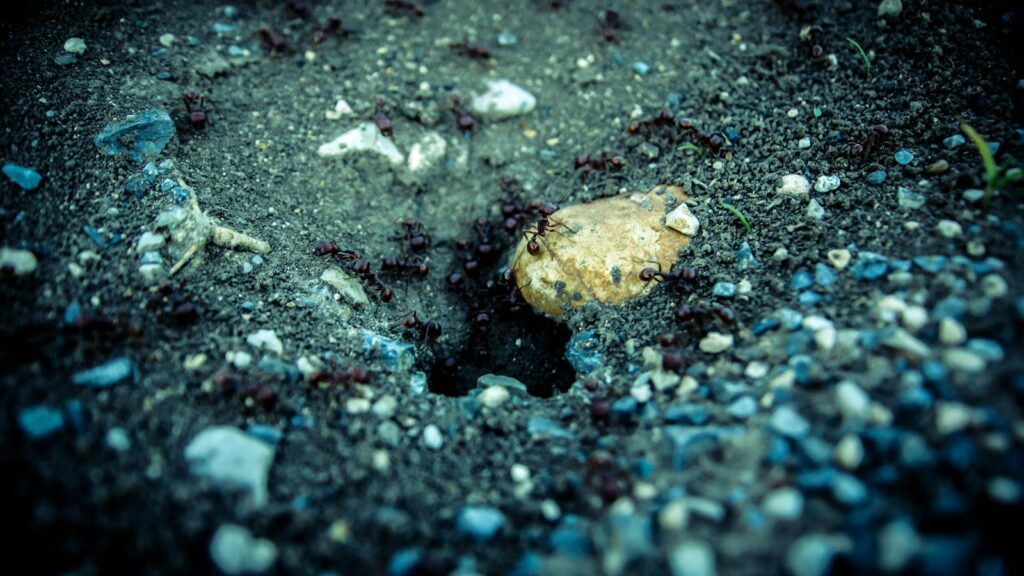
Deep within forests, beneath desert sands, and hidden in plain sight on our lawns exist some of Earth’s most extraordinary societies – insect colonies that rival human civilizations in complexity and efficiency. These miniature worlds operate with remarkable precision, featuring division of labor, architectural marvels, agricultural systems, and even warfare strategies that have evolved over millions of years. While we often overlook these tiny neighbors, their social structures represent some of the most successful evolutionary experiments on our planet. From the military precision of army ants to the climate-controlled skyscrapers of termites, these insect societies demonstrate collective intelligence that continues to astonish researchers. Let’s explore the most complex social insect colonies ever discovered, revealing how these tiny creatures build, defend, and sustain communities that put our own organizational abilities into perspective.
The Megalopolis of Leaf-Cutter Ants
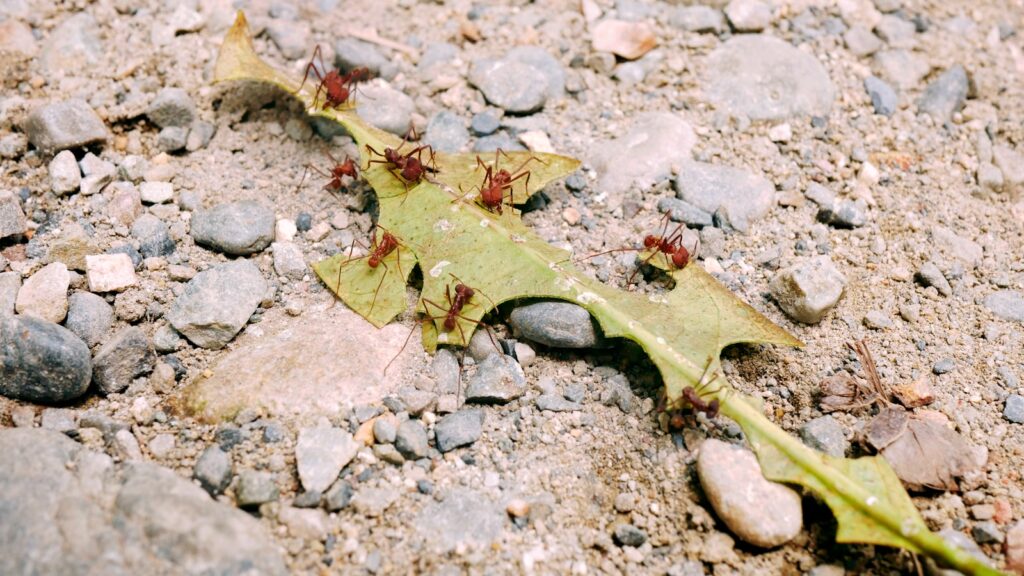
Among the most impressive insect societies are those created by leaf-cutter ants, particularly those belonging to the Atta genus found throughout South and Central America. In 2001, scientists discovered an Atta colony in Brazil that spanned over 538 square feet and extended 26 feet below ground, containing an estimated 8 million individuals working in perfect coordination. These underground metropolises feature hundreds of interconnected chambers designed for specific functions: nurseries for young, royal chambers for the queen, waste disposal sites, and most remarkably, elaborate fungus gardens where the ants cultivate their food. The ants don’t actually eat the leaves they harvest; instead, they use this plant material to feed a specific fungus they’ve domesticated over millions of years, effectively making them Earth’s first farmers long before humans developed agriculture. What makes these colonies particularly complex is their sophisticated caste system, with at least four distinct worker sizes each performing specific tasks, from tiny workers tending the fungus gardens to large soldiers defending the colony.
Termite Cathedral Mounds: Nature’s Skyscrapers
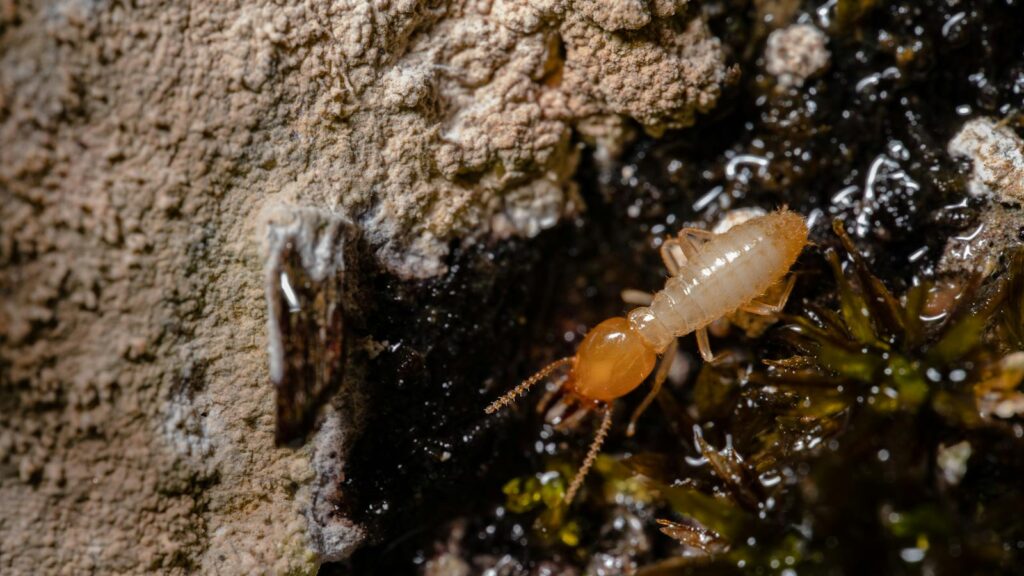
The massive structures built by Macrotermes termites in Africa and Australia represent perhaps the most extraordinary architectural achievements in the insect world. The most complex colony ever documented was found in northern Australia, where compass termites (Amitermes meridionalis) constructed a mound reaching nearly 26 feet tall – equivalent to a human building a structure four miles high. These termite cathedrals aren’t merely impressive for their size but for their sophisticated internal climate control systems. Through a complex network of tunnels and chambers that function as a passive air conditioning system, these insects maintain constant temperature and humidity levels necessary for their survival and for cultivating the fungus gardens that provide their nutrition. The engineering precision is so remarkable that human architects study these structures for inspiration in creating sustainable buildings. Inside these vast colonies live millions of termites divided into distinct castes – workers, soldiers, reproductive alates, and the royal pair – all functioning together as a superorganism where individual insects act more like cells in a larger body than independent creatures.
Army Ant Bivouacs: The Living Architecture

Perhaps the most nomadic of all social insects, army ants create temporary but incredibly complex colonies called bivouacs entirely from their own bodies. The most remarkable example was documented in the Amazon rainforest, where researchers observed a colony of Eciton burchellii forming a living structure containing over 700,000 individuals linked together by their legs and mandibles. Unlike most insect colonies with permanent nests, these temporary structures can form and disassemble in hours, creating living architecture that protects the queen and brood while maintaining precise temperature and humidity levels. The complexity of army ant colonies extends beyond their physical structure to their hunting strategies, which resemble military operations more than simple foraging. These colonies function as superorganisms that can adapt to rapidly changing conditions, with workers forming living bridges over obstacles and creating protective walls around vulnerable members. What makes these colonies particularly extraordinary is how they achieve such coordination without any centralized control system – no single ant directs the colony, yet they move and function with a unified purpose that continues to baffle scientists.
The Super-Colonies of Argentine Ants

In terms of sheer scale, nothing in the insect world compares to the massive super-colonies formed by Argentine ants (Linepithema humile). The most astonishing discovery came in 2000 when researchers identified a single interconnected colony stretching nearly 3,700 miles along the Mediterranean coast from Italy through France to Portugal. This mega-colony contains billions of workers and millions of queens all functioning as one social unit, with ants recognizing nestmates across vast geographical distances through shared chemical signals. What makes this particularly remarkable is that in their native South America, these ants form much smaller colonies that compete aggressively with each other. The complex social structure of these super-colonies represents an evolutionary anomaly, as the ants have essentially eliminated competition between related groups, creating a level of cooperation previously unseen in nature. This adaptation has made Argentine ants one of the most successful invasive species on the planet, capable of displacing native ant populations through their extraordinary numbers and coordinated efforts rather than through individual strength or aggression.
Honeybee Democracies: Collective Decision-Making
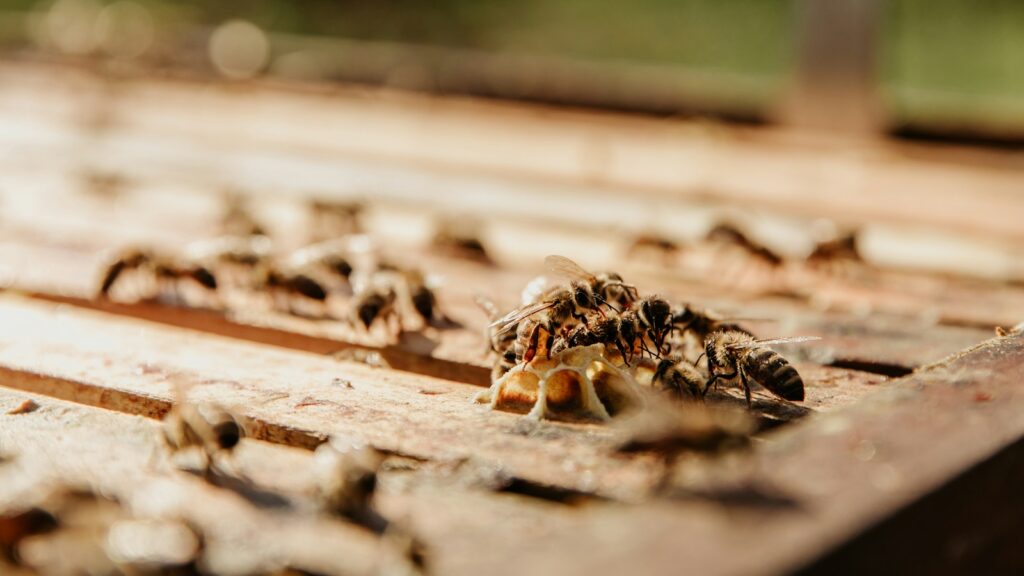
The complexity of honeybee colonies extends far beyond their elaborately constructed hexagonal combs to their sophisticated social organization and collective intelligence. A particularly complex example was documented in a wild colony containing approximately 50,000 individuals living in an old oak tree in Cornell University’s Arnot Forest, where researchers observed remarkably efficient decision-making processes. When scouting for new nest sites, honeybees employ a form of democratic process where scout bees “vote” on potential locations through their waggle dances, with the intensity and duration of the dance indicating the quality of the site they’ve found. What makes this process extraordinary is how the colony reaches consensus – as more scouts investigate promising sites, their dances converge until a quorum is reached, allowing thousands of individual bees to make unified decisions without any centralized leadership. The colony further demonstrates complexity through its temperature regulation system, maintaining the brood area at a precise 93.2°F regardless of external conditions, and through its intricate communication system that conveys information about food sources up to six miles away. The organizational sophistication of honeybee colonies represents one of nature’s most impressive examples of collective intelligence achieving outcomes impossible for individuals.
Weaver Ant Engineering Marvels
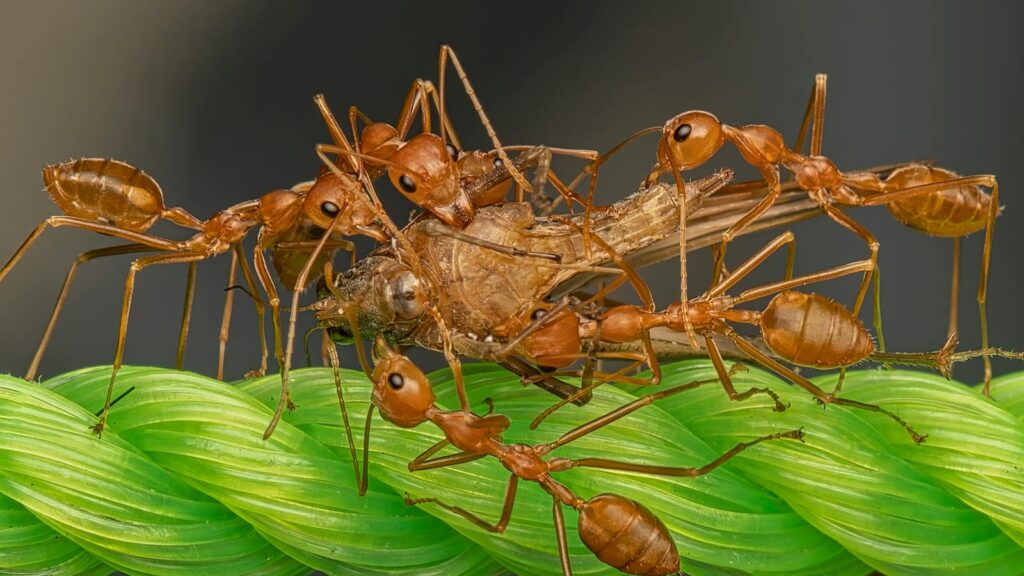
Weaver ants (Oecophylla species) construct some of the most complex nests in the insect world, creating intricate structures from living leaves sewn together with silk. The most impressive colony documented was in Malaysia’s tropical forests, where researchers found a single colony spanning 12 trees with over 500,000 workers maintaining multiple interconnected nests. What makes their construction technique particularly remarkable is the coordination required – worker ants form living chains to pull leaves together, while others carry larvae that produce silk, using them as living sewing machines by gently squeezing them to release silk strands. These colonies demonstrate extraordinary division of labor, with major workers focusing on defense and construction while minor workers tend to brood care and hunting. Beyond their architectural achievements, weaver ant colonies maintain complex territorial boundaries that they defend aggressively, using chemical signals to identify colony members across vast distances spanning multiple trees. Their farming practices add another layer of complexity, as they actively protect certain sap-producing insects in exchange for honeydew, essentially practicing animal husbandry alongside their construction expertise.
The Agricultural Society of Fungus-Growing Termites

Fungus-growing termites of the subfamily Macrotermitinae have developed one of the most sophisticated agricultural systems in the animal kingdom. The most complex colony ever studied was found in the Ivory Coast, where researchers discovered a Macrotermes bellicosus colony featuring multiple interconnected fungus gardens spanning nearly 30 feet across and housing over 20 million individuals. Within carefully constructed chambers, these termites maintain fungus combs where they cultivate a specific species of Termitomyces fungi, creating an ideal microclimate through the colony’s ventilation system. What makes their agricultural practice particularly complex is how the termites process plant material before adding it to the fungal gardens – they consume woody materials, partially digest them, and then excrete them onto the fungus combs, essentially using their own digestive systems as the first stage in breaking down complex plant compounds. The relationship between these termites and their fungi represents one of the oldest examples of mutual symbiosis, having evolved approximately 31 million years ago. This complex interdependent relationship allows these termites to convert indigestible cellulose into nutritional food, effectively creating the insect equivalent of industrial agriculture long before humans developed similar systems.
Trap-Jaw Ant Defensive Strategies

Colonies of trap-jaw ants (Odontomachus species) demonstrate extraordinary complexity in their defensive tactics and social organization. Researchers studying a particularly sophisticated colony in Costa Rica documented a multi-tiered defense system involving specialized soldiers with different response thresholds and attack strategies. These ants possess spring-loaded mandibles that can snap shut at speeds reaching 140 mph – the fastest recorded movement in the animal kingdom – allowing them to effectively dispatch threats or even propel themselves through the air to escape danger. What makes their colonies particularly complex is how they organize collective defense through a combination of chemical signals and mechanical triggers, creating layered security zones around their nests. Inside the colony, trap-jaw ants maintain elaborate sorting systems for their brood, arranging eggs, larvae, and pupae in specific chambers based on developmental stage and environmental needs. The coordination between different castes during both routine activities and emergency situations demonstrates a level of social complexity that allows these relatively small colonies (typically 10,000-20,000 individuals) to successfully defend territories against much larger competitor species through superior organization rather than numerical advantage.
The Democracy of Paper Wasps

Paper wasps (Polistes species) create colonies with remarkably complex social hierarchies and collective decision-making processes. A particularly sophisticated colony studied in Arizona revealed an unusual form of reproductive dominance hierarchy where multiple foundresses cooperate to build and defend a nest, but establish a clear pecking order that determines egg-laying privileges. What makes these colonies extraordinary is their combination of cooperation and competition – subordinate wasps could potentially leave to start their own nests but often choose to remain as helpers, making these colonies a valuable model for understanding the evolution of social behavior. Their nest construction technique demonstrates remarkable engineering skill, as they create waterproof paper by mixing wood fibers with saliva, building elaborate hexagonal cells that expand as the colony grows. Perhaps most fascinating is their facial recognition ability – paper wasps can recognize individual colony members by their unique facial patterns, allowing them to maintain complex social relationships and remember the status of dozens of nestmates. This cognitive ability, previously thought to exist only in more “advanced” vertebrates, illustrates how complex social living can drive the evolution of sophisticated information processing even in insects with relatively small brains.
The Farming Communities of Aphid-Tending Ants

Several ant species have developed complex agricultural relationships with aphids, effectively “farming” these sap-sucking insects for their honeydew secretions. The most elaborate system was documented in a colony of yellow meadow ants (Lasius flavus) in the United Kingdom, where researchers discovered an underground network containing over 150 aphid “herds” carefully managed by the ants. These industrious insects transport aphid eggs into their nests during winter, protecting them from harsh conditions, then carry the hatched aphids to appropriate host plants in spring, effectively domesticating these insects over evolutionary time. The complexity of this relationship extends to active defense, as the ants aggressively protect their aphid herds from predators like ladybugs and parasitic wasps, sometimes even constructing protective shelters around groups of aphids. The ants have been observed selectively breeding their aphids by preferentially protecting certain individuals that produce more honeydew, effectively practicing a form of artificial selection. This multilayered relationship represents one of nature’s most sophisticated examples of mutualism, with chemical communication between species enabling complex coordination despite vast evolutionary distances between ants and aphids.
Stingless Bee Resin Fortresses

Stingless bees (Meliponini tribe) construct some of the most elaborate nest structures in the insect world, particularly the species Tetragonula carbonaria found in Australia. Researchers studying these colonies discovered intricate spiral-shaped brood combs surrounded by complex protective structures made from plant resins mixed with wax and soil. Unlike honeybees’ uniform honeycombs, these spiral arrangements allow the colony to expand in three dimensions while maintaining efficiency, with new cells added to the outer edges as the colony grows. What makes these nests particularly sophisticated is their elaborate entrance structures – long tubes with security checkpoints where guard bees inspect incoming individuals, allowing them to precisely control access despite lacking stingers for defense. Inside these fortified colonies, different zones exist for specific functions: brood chambers, food storage pots, and waste disposal areas, all constructed with different proportions of materials for optimal functionality. The complexity extends to their temperature regulation system, which maintains ideal conditions through the strategic placement of resin deposits with different thermal properties and ventilation channels that can be adjusted by worker bees closing or opening passageways with resin plugs.
The Slave-Making Ants’ Complex Societies

Perhaps the most ethically challenging insect societies to study are those of slave-making ants, particularly Polyergus species, whose colonies represent extraordinary examples of social parasitism. The most complex documented case involved a colony in New York state where researchers observed a Polyergus breviceps colony conducting coordinated raids on neighboring Formica ant nests to capture pupae. What makes these colonies particularly complex is their complete dependence on enslaved workers from other species, as the slave-making ants have evolved to specialize exclusively in raiding and reproduction, losing the ability to feed themselves or care for their own young. The slave-making queen initiates a new colony through a remarkable strategy – she infiltrates a host colony, assassinates their queen, and chemically mimics her scent to trick the host workers into raising her offspring. This creates mixed-species colonies with intricate social dynamics where the host species performs all maintenance tasks while the slave-makers conduct regular raids to replenish their workforce. These specialized raiders have evolved sophisticated chemical warfare capabilities, using specific secretions that confuse target colonies during raids, demonstrating how social complexity can drive the evolution of increasingly specialized adaptations over millions of years.
The extraordinary complexity of social insect colonies provides a humbling reminder that sophisticated societies exist all around us, operating according to principles evolved over millions of years. From the climate-controlled skyscrapers of termites to the democratic decision-making of honeybees, these insect civilizations demonstrate remarkable solutions to challenges all societies face: division of labor, communication, resource management, defense, and reproduction. What makes these accomplishments particularly astonishing is that they emerge without central planning, through the collective actions of individuals following simple rules that somehow produce complex, adaptive behaviors at the colony level. As we continue to study these miniature societies, we not only gain insights into evolutionary biology and collective intelligence but also potential inspiration for our own human challenges in organization, sustainability, and cooperation. These tiny architects, farmers, and warriors remind us that some of nature’s most profound achievements come in its smallest packages.
